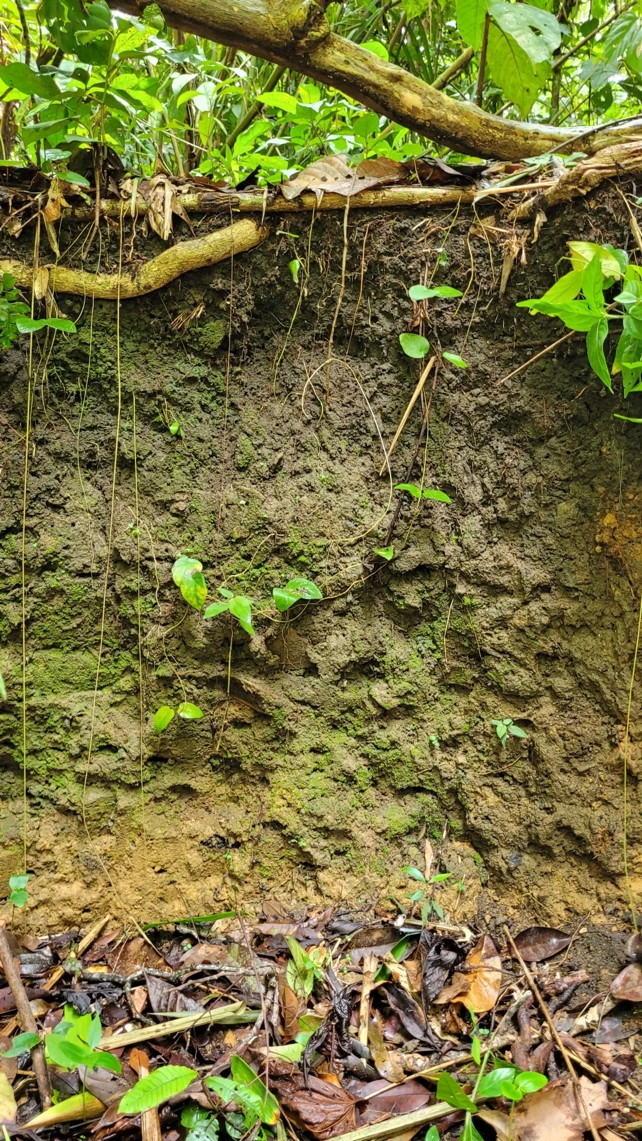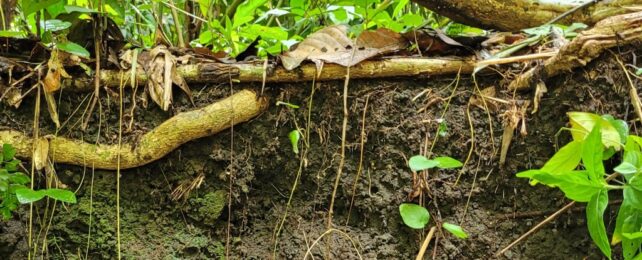The Amazon rainforest is on the precipice of a catastrophic collapse from which it may never return.
The traditional knowledge that once helped cultivate this precious ecosystem could now help it recover, according to new research by researchers from the University of São Paulo, the Brazilian Agricultural Research Corporation, and the National Institute for Amazonian Research in Brazil.
Roughly 2,000 to 2,500 years ago, the Amazonian people known today as the Amerindians took a nutrient-impoverished land and enriched it with compost, charcoal, bone, clay, and manure, creating a black, fertile soil called 'Amazonian dark earth' (ADE).
Today, dark earth soils nourish riverbanks and other regions of the Amazon with minerals like magnesium, zinc, phosphorous, and calcium, providing the perfect habitat for microorganisms. Beneficial to plant health and growth, it is why native people in the Amazon have planted food in dark soils for centuries.

At last, the scientific establishment is paying attention to that deep native knowledge.
A set of experiments on Amazonian dark earth suggests these ancient soils can greatly improve an ecosystem's transition from pasture to rainforest. The scientists behind the new research hope their findings can be used to speed up ecological restoration projects in the Amazon today.
"ADE has taken thousands of years to accumulate and would take an equal time to regenerate in nature if used,' says molecular biologist Siu Mui Tsai from the University of São Paulo.
"Our recommendations aren't to utilize ADE itself, but rather to copy its characteristics, particularly its microorganisms, for use in future ecological restoration projects."
In pots with either control soil, 20 percent ADE and 80 percent control soil, or 100 percent ADE, the researchers grew grasses before cutting them back, leaving just their roots. They then planted the seeds of three types of tree and watched them grow for 90 days.
At the start of the experiments, the dark soil was less acidic and included more sand and silt than the control soil. It also contained 30 times more phosphorous, 6 times more calcium, 5 times more zinc, and 4 times more iron, carbon, and copper.
After the potted plants had time to grow, the soil was sapped of some nutrients. But pots containing dark earth were still much richer in minerals than the control soil.
Much of the deforestation that currently occurs in the Amazon is to make room for grazing cattle. But this pastureland is created at the expense of an irreplaceable ecosystem that stores huge amounts of carbon and supports a massive diversity of life forms.
Dark earth soil could go a long way towards recovering that lost habitat, even in a warming world. The soil mix containing only 20 percent dark soil was still hugely beneficial for tree growth in a temperature-controlled greenhouse. In fact, a small dose of genuine ADE mixed into degraded soil provided nearly as much plant growth as 100 percent ADE on its own under a mean temperature of 34ºC.
The microbial community hosted in dark soil was also more diverse compared to that in pots containing more degraded soil.
"Microbes transform chemical soil particles into nutrients that can be taken up by plants," explains University of São Paulo molecular biologist and joint lead author Anderson Santos de Freitas.
"Our data showed that [Amazonian dark earth] contains microorganisms that are better at this transformation of soils, thus providing more resources for plant development."
In the experiments, for instance, grasses grew 3.4 times thicker in soil containing 20 percent ADE and 8 times thicker in pure ADE soil than in controls.
Some trees also grew three to six times taller when planted in soils containing ADE. The primary, or colonizing, species Ambay pumpwood (Cecropia pachystachya) wouldn't even grow if it didn't have access to ADE and its crucial minerals.
Without ADE, the findings suggest some trees in the Amazon may not take root at all.
Dark soil may be key to their recovery.
The study was published in Frontiers in Soil Science.
